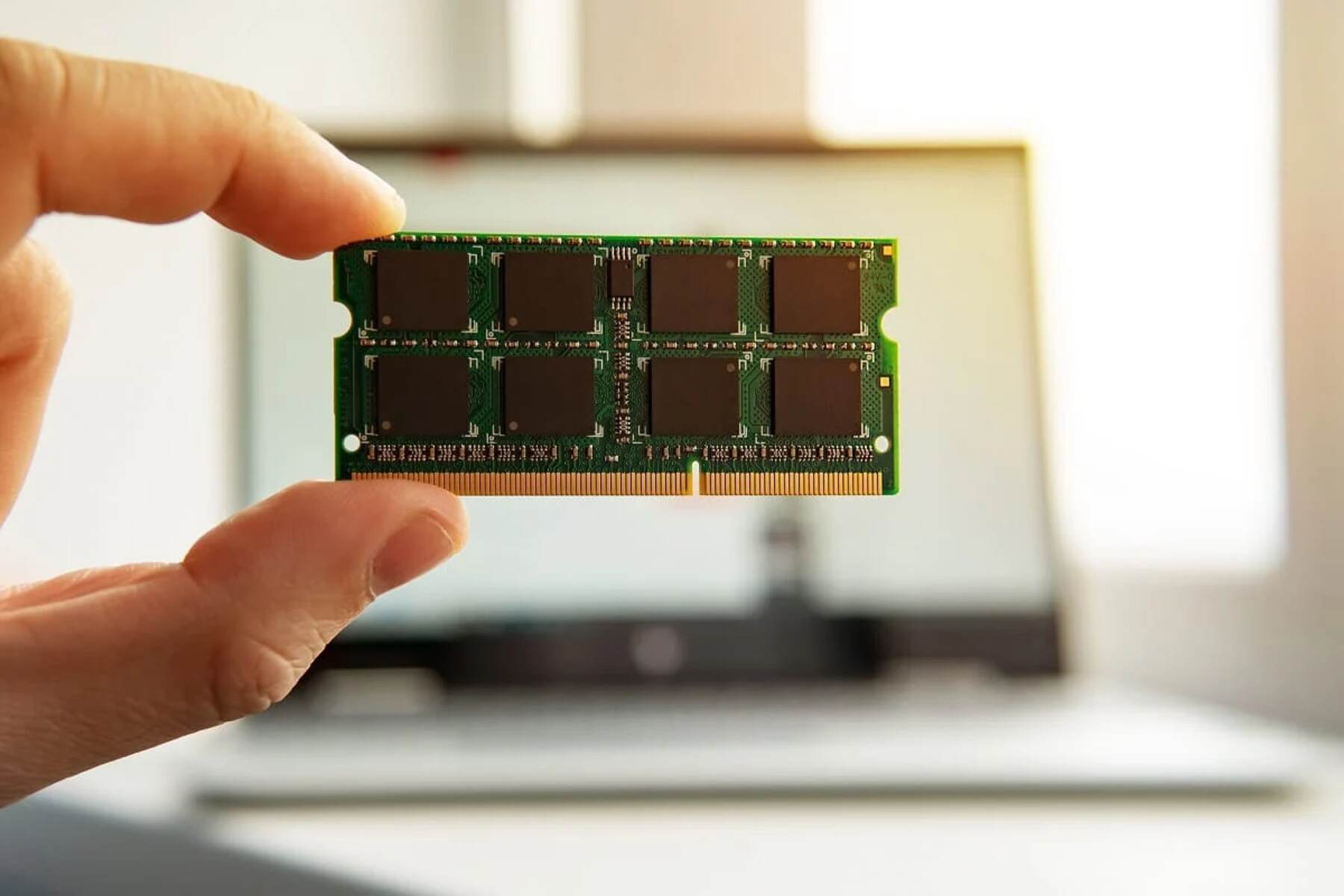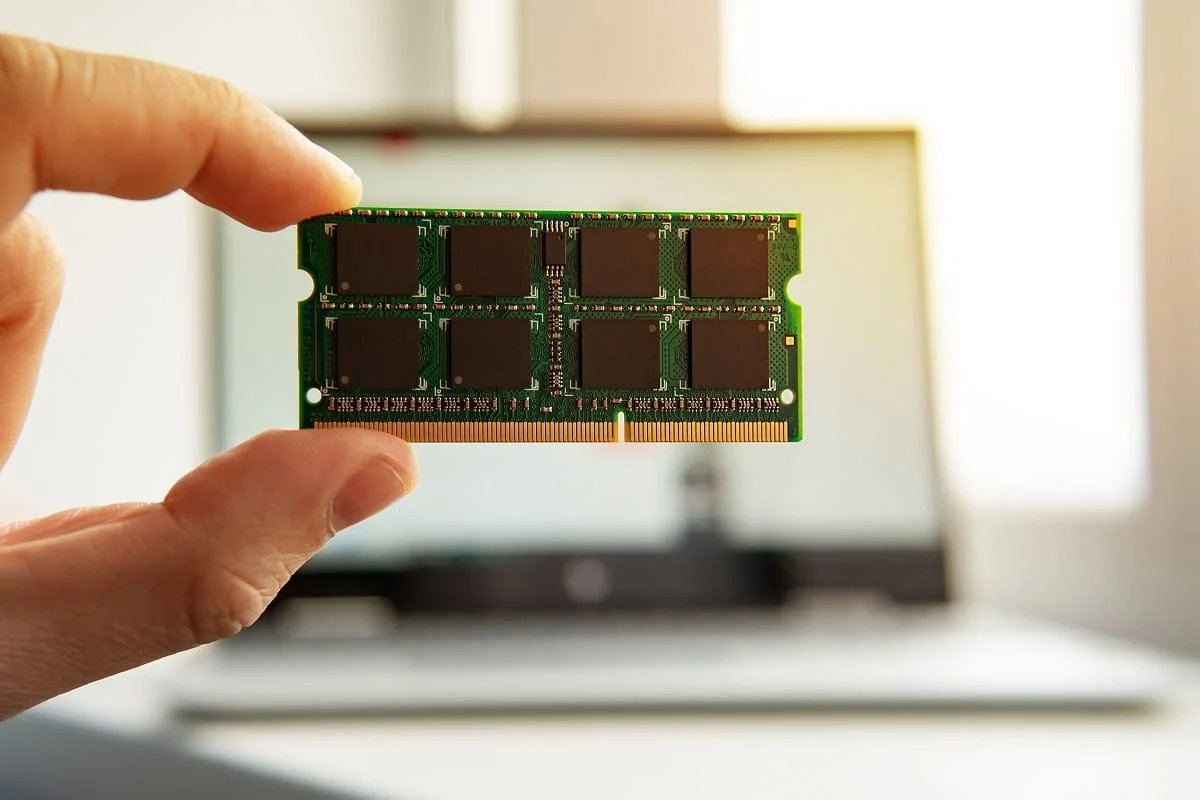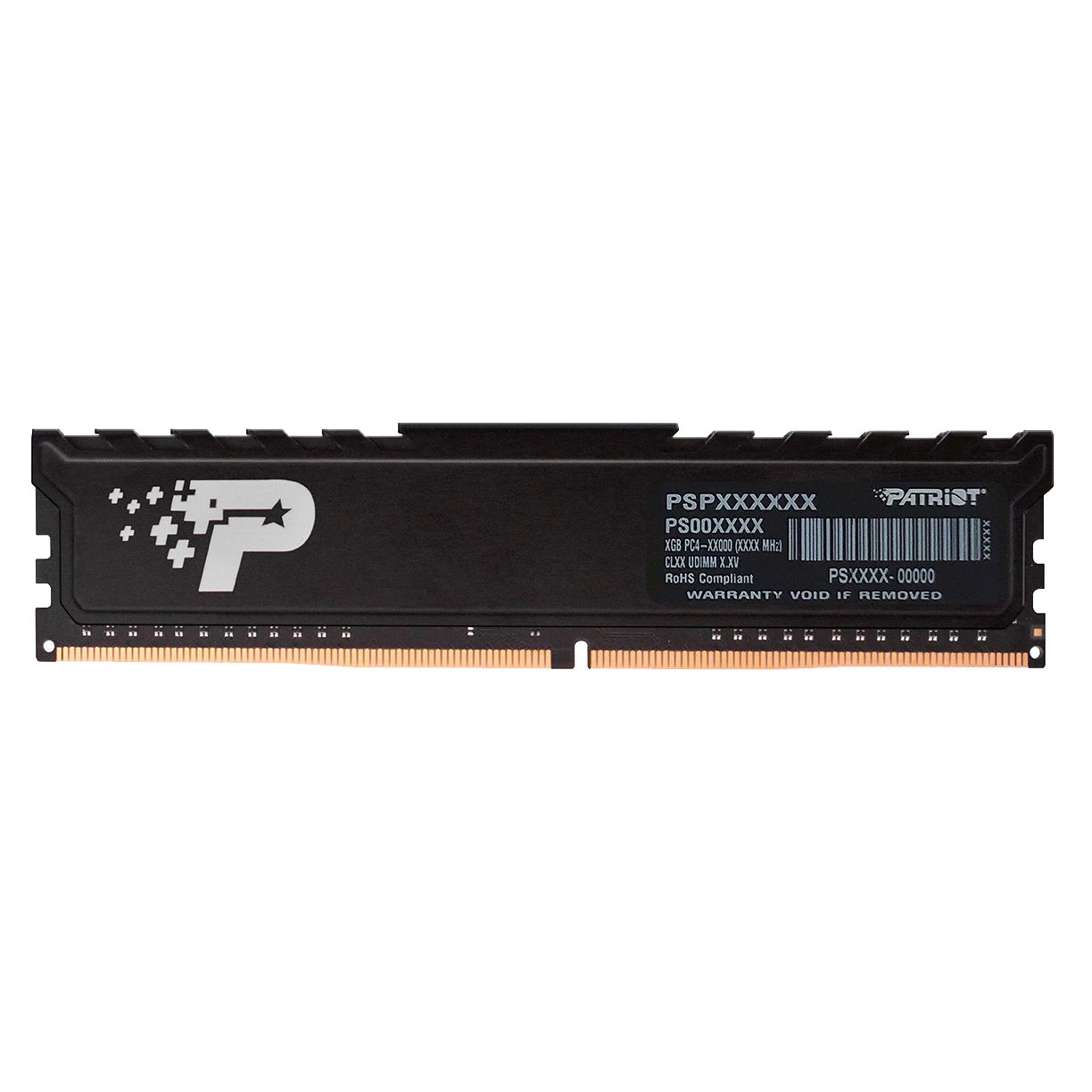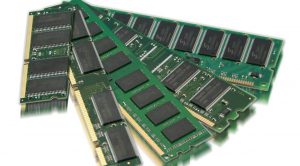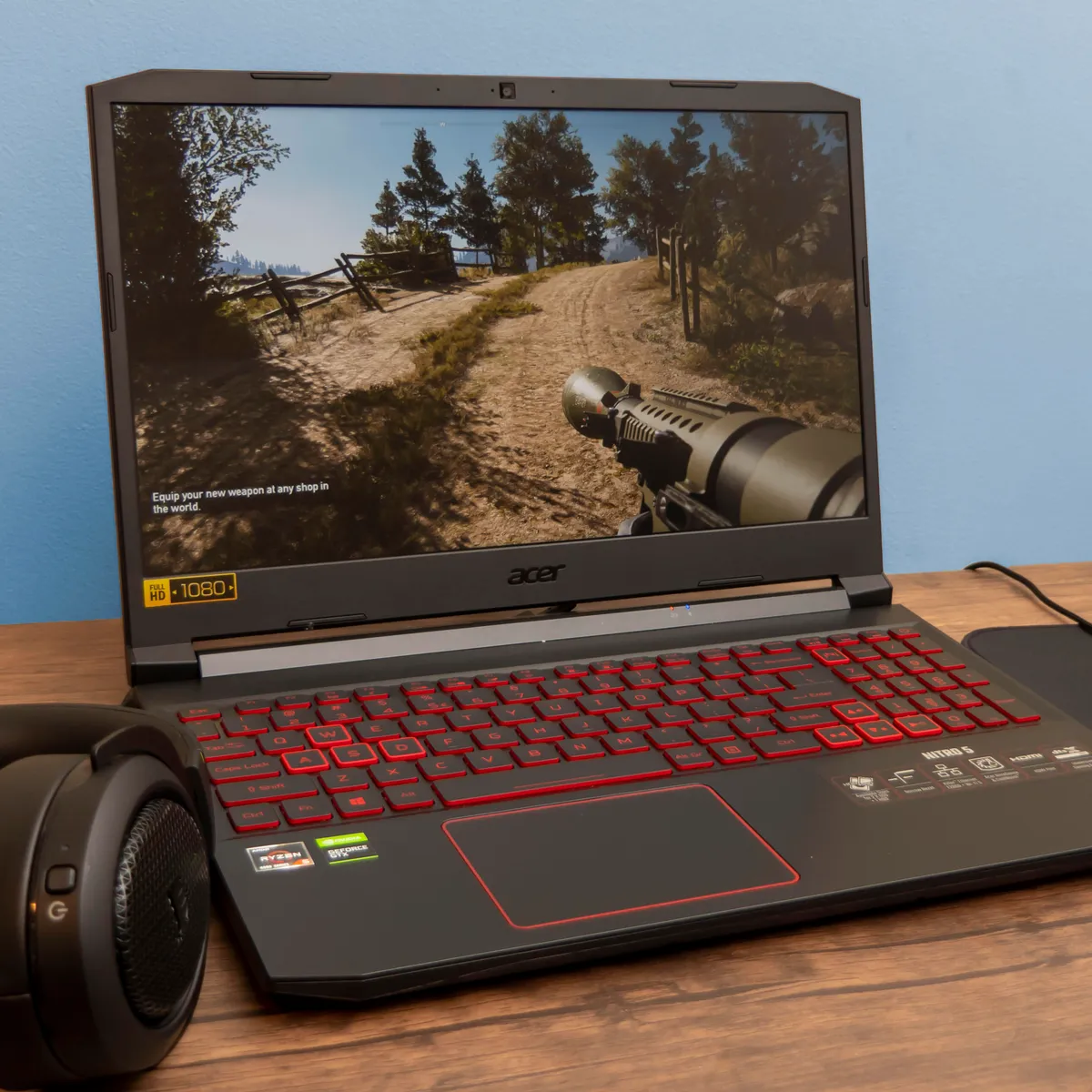Introduction
Welcome to the digital age, where technology plays an integral role in our everyday lives. Whether it’s for work, entertainment, or communication, computers have become an essential tool that we rely on. One key component of a computer’s performance is RAM, or Random Access Memory. But what exactly is RAM, and how much of it does your Windows 10 system need?
RAM, in simple terms, is the temporary storage space that your computer uses to run applications and execute tasks. It allows your system to access and retrieve data quickly, resulting in faster and smoother performance overall. When it comes to Windows 10, having the right amount of RAM is crucial for optimal functionality.
In this article, we will explore the ideal RAM requirements for Windows 10, as well as factors that can impact RAM usage. We will also provide some tips to optimize your RAM usage, ensuring that your Windows 10 experience is both efficient and responsive.
Whether you’re a casual user who needs basic functions like web browsing and document editing, or a power user who frequently engages in resource-intensive tasks such as multimedia editing or gaming, understanding the RAM needs of your Windows 10 system is essential. So, let’s dive in and demystify the world of RAM and its role in Windows 10!
What is RAM?
Before delving into the specifics of RAM requirements for Windows 10, it’s important to have a basic understanding of what RAM actually is. RAM, or Random Access Memory, is a type of computer memory that serves as a temporary storage space for data that your computer needs to access quickly. Think of it as your computer’s short-term memory.
Unlike your computer’s hard drive, which stores data permanently, RAM stores data only while your computer is powered on. This data includes instructions for running programs, as well as the data that those programs need to process. The more RAM you have, the more quickly and efficiently your computer can complete tasks and run applications.
RAM operates at a much faster speed than a hard drive or solid-state drive, enabling quick access to data. It allows your computer’s processor, or CPU, to quickly retrieve and manipulate bits of data, resulting in faster program execution and smoother multitasking.
Think of RAM as a workspace for your computer. When you open an application, it is loaded into RAM, allowing your computer’s processor to directly access the necessary data. This quick access ensures that the application runs smoothly and without delays.
Furthermore, RAM is a volatile form of memory, meaning that its contents are lost when the computer is powered off or restarted. This is why it’s important to save your work before shutting down your computer, as any unsaved data or changes will be lost once the power is cut off.
The amount of RAM you have in your computer directly impacts its performance, particularly when running resource-intensive applications or multitasking. Having an insufficient amount of RAM can lead to sluggish system performance, frequent freezing or crashes, and slower application loading times.
Now that we have a basic understanding of what RAM is, let’s explore how RAM is used in Windows 10 and the minimum requirements for a smooth-running system.
How RAM is used in Windows 10
When you power on your Windows 10 computer, the operating system is loaded into RAM. This allows Windows 10 to utilize the available RAM to efficiently run applications and carry out various tasks. Every program you launch, whether it’s a web browser, word processor, or media player, utilizes a portion of the available RAM to store its data temporarily.
Windows 10 dynamically allocates RAM to different programs based on their priority and resource requirements. As you open more applications or tabs in your web browser, the amount of RAM being used increases. Once the available RAM reaches its limit, Windows 10 starts using a portion of your computer’s hard drive space as virtual memory to compensate for the lack of physical RAM.
This process, known as paging or swapping, allows Windows 10 to temporarily move data from RAM to the hard drive, making more room for new data. However, since the hard drive is significantly slower than RAM, this can lead to a noticeable slowdown in performance. The more your system relies on virtual memory, the slower your computer may become.
Windows 10 also utilizes RAM for various system processes and services. These background processes ensure the smooth functioning of your computer’s hardware and software components. They help maintain system stability, handle network connections, and manage device drivers, among other tasks.
Furthermore, Windows 10 uses a feature called SuperFetch, which analyzes your usage patterns and preloads frequently used applications into RAM. This helps improve overall system responsiveness by reducing the time it takes to launch programs you frequently use.
In summary, RAM plays a crucial role in how Windows 10 operates. It acts as a temporary storage space for running applications, system processes, and data, enabling fast and efficient multitasking. Having a sufficient amount of RAM is essential for a smooth and responsive Windows 10 experience.
Minimum RAM requirements for Windows 10
When it comes to the minimum RAM requirements for Windows 10, Microsoft recommends at least 1 gigabyte (GB) of RAM for the 32-bit version and 2 GB for the 64-bit version. These minimum requirements ensure that Windows 10 can run smoothly with basic functions and lightweight applications.
However, it’s worth noting that these minimum requirements may not provide the best performance for more demanding tasks or resource-intensive applications. If you plan on using your computer for tasks such as video editing, gaming, or running multiple applications simultaneously, it’s advisable to have more RAM to ensure a responsive and lag-free experience.
While it’s possible to run Windows 10 on systems with the minimum required RAM, you may experience slower performance, longer application load times, and reduced multitasking capabilities. Additionally, if your system is low on RAM, it may rely more heavily on virtual memory, which can further impact performance.
For optimal performance, especially for power users or those engaging in resource-intensive tasks, it is recommended to have at least 8 GB of RAM or higher. This allows Windows 10 to allocate sufficient memory for running multiple applications, handling complex tasks, and delivering a smooth user experience.
It’s also important to consider other factors that can impact RAM usage, such as the hardware components of your computer. Modern applications and games often have higher memory requirements, and as technology advances, these requirements will continue to increase.
Ultimately, having more RAM than the minimum requirements not only ensures better performance but also future-proofs your system as applications become more demanding over time.
Keep in mind that the minimum RAM requirements mentioned are for the base installation of Windows 10. Additional software, background processes, and personal usage habits can all contribute to increased RAM usage. Therefore, it’s always a good idea to have some headroom and consider the recommended RAM requirements.
Recommended RAM for Windows 10
While the minimum RAM requirements for Windows 10 ensure basic functionality, if you want to have a smooth and responsive experience, especially for multitasking or running resource-intensive applications, it is recommended to have more RAM.
For most users, a recommended minimum of 8 gigabytes (GB) of RAM is ideal. This amount of RAM allows for seamless multitasking, smooth application performance, and faster load times. It provides ample space for running multiple applications simultaneously without experiencing significant slowdowns.
However, depending on your specific needs and usage patterns, you may require even more RAM. For power users, gamers, content creators, or professionals working with demanding applications like video editing software or 3D rendering tools, having 16 GB or more of RAM is highly recommended.
With 16 GB or higher RAM capacity, you can comfortably handle complex tasks, work with large files, and run memory-intensive applications without experiencing any significant performance degradation. This level of RAM also future-proofs your system, allowing for smoother performance as applications and software continue to evolve and demand more resources.
In addition to the amount of RAM, it’s important to consider the speed and type of RAM. The speed of RAM, measured in megahertz (MHz), affects the rate at which data can be transferred and accessed. Opting for faster RAM can improve overall system performance, especially in tasks that involve heavy data manipulation or content rendering.
As for the type of RAM, most modern systems use DDR4 RAM, which offers improved performance compared to its predecessor, DDR3. However, it’s crucial to ensure compatibility with your motherboard, as not all systems support DDR4 RAM. Refer to your system’s documentation or consult with a professional if you’re unsure about the type of RAM your system can accommodate.
Ultimately, the recommended amount of RAM for Windows 10 depends on your specific needs and usage. Consider the kind of applications you use, the complexity of tasks you perform, and your future plans for system upgrades. Investing in sufficient RAM ensures a smooth and responsive experience while allowing your system to handle demanding tasks with ease.
Factors that can increase RAM usage in Windows 10
While the amount of RAM you have is important, it’s also crucial to understand the various factors that can impact RAM usage in Windows 10. These factors can contribute to higher RAM consumption and affect the overall performance of your system.
1. Multitasking: Running multiple applications simultaneously requires more RAM as each application consumes a portion of the available memory. The more programs you have open, the more RAM is needed to accommodate their data and processes.
2. Resource-intensive applications: Certain applications, such as video editing software, 3D modeling tools, or virtual machines, can be memory hogs. These applications often require large amounts of RAM to process complex data or perform resource-intensive tasks. Using these applications can significantly increase RAM usage.
3. Web browsing: Modern web browsers are notorious for their memory usage. With the prevalence of resource-heavy websites, each open tab consumes memory. Keeping numerous tabs open or visiting memory-intensive websites can quickly add up and strain your system’s available RAM.
4. Background processes: Windows 10 runs various background processes and services to maintain system stability and handle system functions. These background processes contribute to RAM usage, even if you’re not actively using them. The number and complexity of these processes can vary depending on system settings and installed software.
5. Virtualization: If you use virtualization software, such as VMWare or VirtualBox, to run multiple operating systems simultaneously, it can significantly increase your RAM requirements. Each virtual machine running on your system will allocate a certain amount of RAM, which can quickly deplete available memory.
6. File compression and encryption: Performing tasks like file compression or encryption can require large amounts of temporary RAM space. When compressing or encrypting files, the data is processed in memory before being saved on disk. This temporary storage can increase RAM usage during the operation.
7. Operating system updates and antivirus scans: Windows 10 updates and running antivirus scans can temporarily increase RAM usage. These processes require additional memory to store and process data, ensuring that your system remains up to date and protected from malware.
It’s important to note that these factors are not inherently negative. Some applications, processes, or tasks require more RAM to function optimally. However, it’s essential to be aware of the impact they can have on your system’s performance, especially if you notice frequent slowdowns or insufficient memory errors.
Understanding these factors will help you better manage your system’s RAM usage and make informed decisions about upgrading your RAM if needed.
How to check your current RAM usage in Windows 10
Monitoring your current RAM usage can provide valuable insights into how your system is utilizing memory resources. Windows 10 provides several methods to check your RAM usage and determine if your system requires additional memory. Here are a few methods to check your current RAM usage:
1. Task Manager: The Task Manager is a built-in Windows utility that displays real-time information about running processes and resource usage. To open Task Manager, right-click on the taskbar and select “Task Manager” from the menu. In the Task Manager window, navigate to the “Performance” tab and click on “Memory.” Here, you can view the total amount of RAM installed, the amount in use, and the percentage of usage.
2. Resource Monitor: Resource Monitor provides a more detailed view of your system’s resource usage, including RAM. To open Resource Monitor, press the Windows key + X and select “Resource Monitor” from the menu. In the Resource Monitor window, click on the “Memory” tab. Here, you can see a graphical representation of RAM usage, along with information on the processes that are consuming memory.
3. Windows Settings: Another way to check your current RAM usage is through the Windows Settings. Press the Windows key + I to open the Settings app. In the Settings window, click on “System,” then navigate to the “About” section. Scroll down to the “Device specifications” section, where you’ll find the installed RAM and the system type (32-bit or 64-bit).
4. Third-party software: Various third-party software options are available for monitoring system performance, including RAM usage. These software packages, such as CPU-Z, HWMonitor, or Speccy, provide detailed information about your hardware, including RAM usage, frequency, and timings. They often offer more advanced monitoring features compared to the built-in Windows utilities.
By regularly checking your current RAM usage, you can determine if your system is utilizing memory optimally or if upgrades are necessary. If you consistently notice high RAM usage, even during normal usage, it may indicate that your system could benefit from additional memory.
Remember that RAM usage can fluctuate depending on the applications and processes running on your system. It’s normal to see occasional spikes in RAM usage when launching demanding applications or performing resource-intensive tasks. However, if your system frequently reaches near maximum capacity or experiences performance issues due to insufficient memory, it may be time to consider upgrading your RAM.
Tips to optimize RAM usage in Windows 10
Optimizing RAM usage can help improve overall system performance, reduce slowdowns, and ensure smooth multitasking in Windows 10. Here are some tips to help you optimize RAM usage:
1. Close unnecessary applications and processes: Close any unused applications or processes running in the background. These applications consume memory even when they’re not actively being used. Use the Task Manager or a third-party task management tool to identify and close resource-hungry processes.
2. Limit startup programs: Reduce the number of programs that automatically launch at startup. These programs consume memory and can slow down your system’s boot time. Use the Task Manager’s “Startup” tab to disable unnecessary startup programs.
3. Adjust visual effects: Windows 10 offers various visual effects that can consume system resources, including RAM. Adjusting or disabling animations, transparent effects, and other visual enhancements can free up memory and improve performance. To access visual effect settings, right-click on “This PC” or “My Computer,” select “Properties,” and go to the “Advanced system settings.” In the Performance section, click on “Settings” and choose the “Adjust for best performance” option or customize individual settings.
4. Manage browser tabs and extensions: Web browsers and their extensions can be memory-intensive. Limit the number of open browser tabs and disable or remove unnecessary extensions to reduce RAM usage. Consider using bookmarking or session management tools to save and organize tabs for future usage.
5. Disable unnecessary background applications: Some applications may run in the background unnecessarily, consuming memory. Review the list of applications running in the background and disable or uninstall any that you don’t need. You can manage background apps in the Settings app under “Privacy” and “Background apps.”
6. Keep your system updated: Regularly update your operating system, drivers, and software to ensure optimal performance and compatibility. Updates often include performance improvements and bug fixes that can help optimize memory usage.
7. Upgrade your RAM: If you consistently notice high RAM usage and experience performance issues, despite optimizing your system, upgrading your RAM may be necessary. Adding more RAM can provide your system with the necessary resources to handle demanding tasks and run multiple applications simultaneously without lag.
By following these tips, you can optimize RAM usage in Windows 10 and ensure that your system operates smoothly and efficiently. Remember to regularly monitor your RAM usage to identify any potential issues and take appropriate action to maintain optimal performance.
Frequently Asked Questions about RAM in Windows 10
1. Can I mix different RAM modules with different capacities or speeds?
While it’s possible to mix RAM modules with different capacities or speeds, it’s generally recommended to use the same type, capacity, and speed of RAM for optimal compatibility and performance. Mixing different RAM modules can potentially lead to stability issues or reduced performance.
2. Can I upgrade my RAM on a laptop or pre-built computer?
In most cases, laptops and pre-built computers allow for RAM upgrades. However, it’s essential to check the device’s specifications or consult the manufacturer’s documentation to ensure compatibility and determine the maximum amount and type of RAM supported.
3. Does having more RAM make my computer faster?
Having more RAM does not necessarily make your computer inherently faster. However, it allows your system to handle more tasks simultaneously and effectively run memory-intensive applications. With sufficient RAM, you can experience smoother multitasking, faster application loading times, and better overall performance.
4. What happens if I exceed the maximum RAM capacity supported by my motherboard?
If you exceed the maximum RAM capacity supported by your motherboard, your system may not recognize or utilize the additional memory. It’s important to check your motherboard’s specifications to determine the maximum supported RAM capacity and ensure compatibility.
5. Can I upgrade my RAM without reinstalling Windows 10?
Upgrading your RAM typically does not require reinstalling Windows 10. The operating system should automatically recognize the new RAM when you install it. However, it’s always a good practice to back up your important files before making any hardware changes, just in case.
6. Can I upgrade my RAM if I have a 32-bit version of Windows 10?
While a 32-bit version of Windows 10 technically supports up to 4 GB of RAM, due to system limitations, it may not fully utilize or show the full amount of installed RAM. To take full advantage of RAM capacities above 4 GB, it’s recommended to upgrade to a 64-bit version of Windows 10.
7. Does RAM speed affect gaming performance?
RAM speed can have an impact on gaming performance, especially in CPU-intensive games or situations where large amounts of data need to be quickly accessed. However, the difference in gaming performance due to RAM speed is generally minimal compared to other factors such as the graphics card and CPU.
These frequently asked questions provide insights into common concerns about RAM in Windows 10. Understanding these aspects can help you make informed decisions regarding RAM upgrades and effectively optimize your Windows 10 system for improved performance.
Conclusion
RAM plays a crucial role in the performance and responsiveness of your Windows 10 system. Understanding the RAM requirements and optimizing its usage can significantly enhance your computing experience. By having an adequate amount of RAM, you can ensure smooth multitasking, faster application loading times, and better overall performance.
In this article, we explored the basics of RAM and how it is utilized in Windows 10. We discussed the minimum RAM requirements and the recommended RAM for optimal performance, considering factors like multitasking, resource-intensive applications, web browsing, and background processes.
We also provided tips to optimize RAM usage in Windows 10, including closing unnecessary applications, managing startup programs, adjusting visual effects, and keeping your system updated. These strategies can help free up memory and improve system performance.
Furthermore, we learned how to check current RAM usage using built-in Windows tools like Task Manager and Resource Monitor, as well as through third-party software. Monitoring RAM usage allows you to assess your system’s resource requirements and make informed decisions about upgrading your RAM if necessary.
Finally, we addressed frequently asked questions about RAM in Windows 10, covering topics such as mixing different RAM modules, upgrading RAM on laptops or pre-built computers, the relationship between RAM and system speed, and the impact of RAM speed on gaming performance.
By taking the time to understand and optimize RAM usage in Windows 10, you can ensure that your system operates efficiently, handles demanding tasks without slowdowns, and provides an enjoyable user experience. So, assess your RAM needs, apply the tips provided, and make informed decisions to optimize your Windows 10 system for peak performance.









